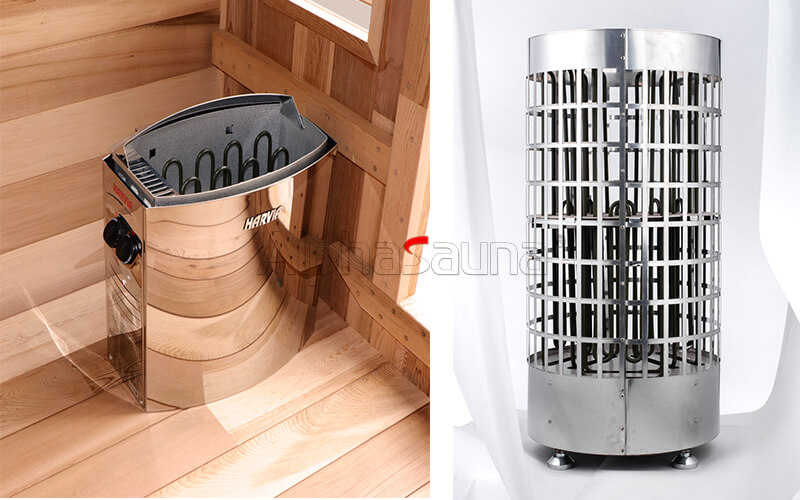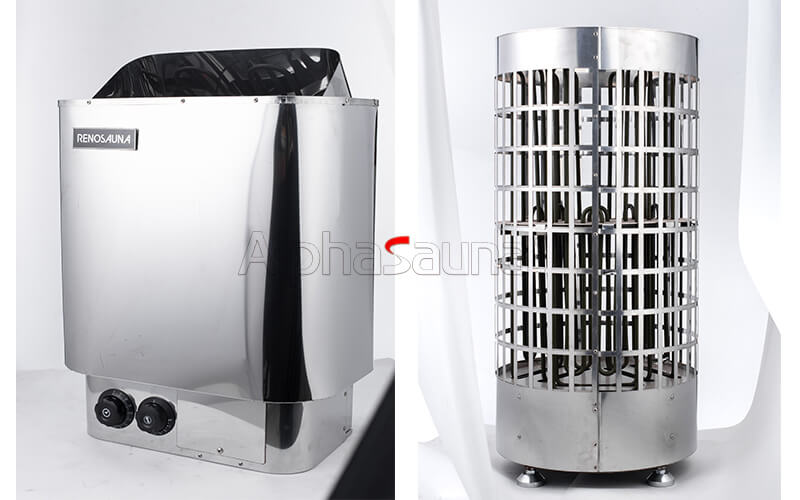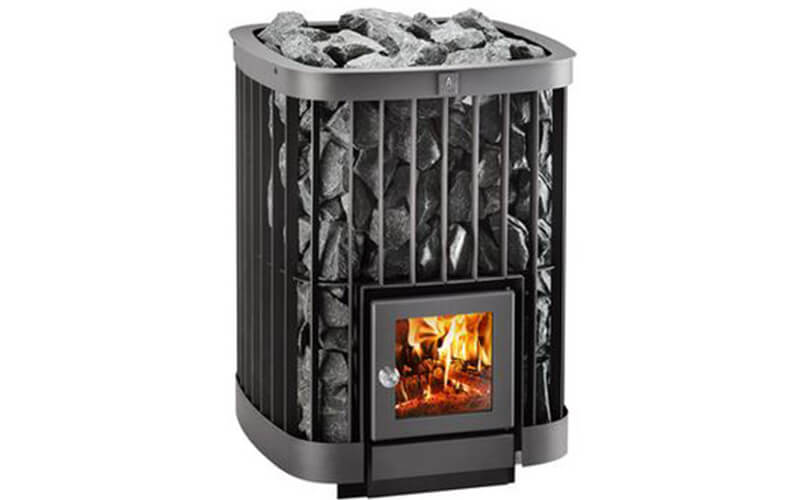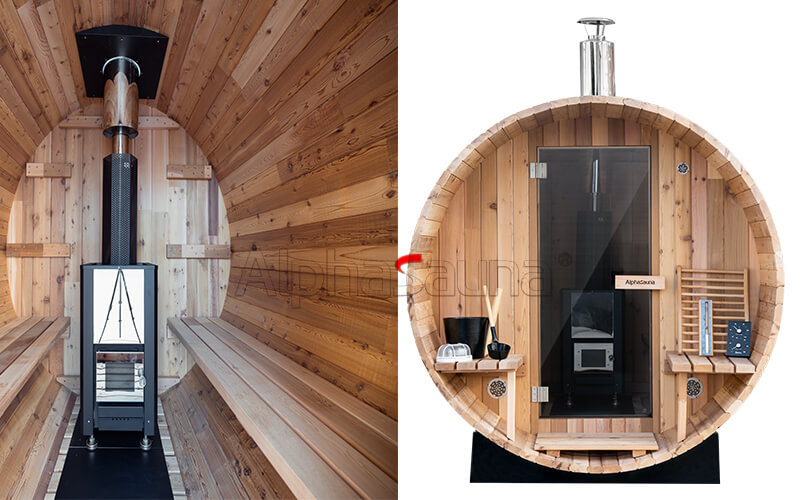Advantages Of Electric Sauna: Energy Saving, Environmental Protection, Comfort And Relaxation
Saunas have a history spanning thousands of years. As far back as ancient times, people began using saunas. The earliest Finnish
saunas generated heat by burning wood to heat stones, and then water was poured onto the stones once they reached a certain
temperature, creating steam. This method produced both heat and moisture in the sauna room. Back then, people would find
a relatively enclosed space and gather together to enjoy the sauna. As living standards improved, people began to construct or
purchase dedicated sauna rooms, which became widely used. With a growing desire for a healthy lifestyle and improved quality
of life, saunas have been continuously refined and upgraded to provide a more comfortable and relaxing experience. Electric saunas,
as a new form of sauna, offer the advantages of being energy-efficient, environmentally friendly, and providing comfort and
relaxation. They have become increasingly popular and are well-loved by many.

How Does An Electric Sauna Heater Work?
The working principle of an electric sauna heater is not overly complicated and can provide the temperature and humidity required
for a sauna in a short period of time. Electricity passes through the heating elements, generating a large amount of heat to raise
the air temperature inside the sauna room. At the same time, specialized sauna stones are placed inside the sauna heater, which
absorb heat. Once these stones reach a certain temperature, water is poured onto them to produce steam, significantly
increasing the humidity inside the sauna room. These stones typically have good thermal conductivity and heat storage properties,
allowing them to absorb and store the heat generated by the electric sauna heater to maintain the sauna room's temperature.
Some modern electric sauna heaters are equipped with temperature and humidity control systems, which can adjust the sauna
room's temperature and humidity to ensure it stays within a comfortable range. Due to electrical safety considerations, electric
sauna heaters are usually equipped with various safety features such as overheating protection and automatic shutdown. If current
overload or high temperatures are detected, the system will automatically shut down to prevent accidents.
Generally, the sauna heater is started via a control panel or smart device, where users can set their preferred temperature and
humidity ranges. The heat generated by the electric heating elements then achieves the sauna room's temperature. The temperature
and humidity control system continuously monitors the sauna room's temperature and humidity. Once the set temperature is
reached, users can enter the sauna room to enjoy the sauna experience. Users can also set the sauna duration, and the sauna
heater will automatically shut off when the set time is reached, ensuring safety and energy efficiency.
The working principle of an electric sauna heater is relatively simple, and the operation steps are straightforward and convenient. After
turning on the power, setting the temperature and humidity range, and duration, users can enjoy the sauna experience to their heart's content.

What Are The Types Of Electric Sauna Heater Elements?
1. Resistance Heating Element:
This type of heating element is typically made of nickel-chromium alloy or stainless steel, making it sturdy and durable. The working principle of resistance heating elements involves generating heat by passing current through the resistance material, resulting in fast heating and high efficiency. It is characterized by high temperature resistance and corrosion resistance, and is widely used in various sauna heaters.
2. Ceramic Heating Element:
Primarily made of alumina or silicon nitride, ceramic heating elements can operate stably in high-temperature environments. They have good thermal conductivity and electrical insulation properties, preventing electrical currents from harming individuals. These electric sauna heater components are suitable for applications requiring uniform heating or high-temperature environments.
3. Quartz Tube Heating Element:
Typically consisting of quartz glass tubes and heating wires, quartz tube heating elements can generate heat quickly, saving time. They are suitable for applications that require rapid heating.
4. PTC Heating Element:
Constructed from barium titanate-based ceramics, PTC heating elements have excellent self-regulating temperature characteristics, enhancing the sauna experience and comfort. These heating elements boast good safety and energy efficiency, ensuring both safety and energy savings while maintaining the sauna's enjoyable experience and comfort.
In summary, electric sauna heater elements come in various types, each providing a different sauna experience in terms of temperature. It's essential to choose according to one's needs. Additionally, regular cleaning of electric sauna heater elements is necessary to ensure hygiene, safety, and sauna effectiveness. Regular inspection of heating elements and stones is crucial. Any abnormalities should be promptly repaired and restored to ensure the sauna's normal operation.

Electric Sauna Heater With Rocks
1. An electric Sauna Heater With Stones:
also known as a rock sauna stove, is a common type of sauna equipment. It is typically constructed using heat-resistant nickel-chromium alloy heating elements to withstand the high temperatures of saunas. The stones have excellent thermal stability, allowing them to store a large amount of heat. The outer shell is usually made of stainless steel or other high-temperature-resistant materials, ensuring durability and protection for the internal components against the sauna's high-temperature environment. Additionally, ventilation openings are often designed to allow hot air to circulate. These heaters typically come equipped with temperature and humidity control systems to provide a comfortable and relaxing sauna experience through setting and adjustment.
2. Working Principle:
When powered on, the electric sauna heater with stones generates heat through the resistance of the heating elements, while the sauna stones provide humidity. The stones also store some heat and continuously release it during the sauna session to provide and maintain the sauna room's temperature.
3. Considerations:
The heater's power should be determined based on the sauna room's size to avoid excessive heat production, which could affect the sauna experience and comfort. Regular inspection of the stones is necessary, as prolonged use may cause them to crack or deteriorate, significantly impacting the sauna experience and effectiveness. If any issues are detected, prompt replacement of the stones is recommended, typically once every one or two years.
An electric sauna heater with stones offers users a unique sauna experience. It combines the features of electric heating and stone storage to provide a more comfortable and relaxing sauna experience.

Diy Electric Sauna Heater
DIY electric sauna heater is a significant and enjoyable project that can be attempted following instructional videos and operation
guides. Below are some simple operation guidelines:
1. Material Preparation:
Prepare resistance heating elements, metal casing, sauna stones, temperature and humidity controller, control panel, insulation materials, as well as screwdrivers and wrenches.
2. Installation Process:
Determine the sauna heater's size and shape, install and place the resistance heating elements and sauna stones, then assemble the casing. Ensure complete wiring connections and good insulation, and ensure sauna stones' placement does not obstruct ventilation. Install the temperature and humidity controller, connect the control panel to the power supply, and conduct a test run to ensure the heating elements work correctly. After assembly, check all electrical connections for stability and potential hazards before using the electric sauna heater.
3. Precautions:
Ensure all electrical connections comply with local electrical regulations and standards. Place the sauna heater away from flammable or explosive environments to prevent hazards. Regular inspection and cleaning of heating elements and sauna stones are also necessary.
Generally, DIY electric sauna heaters may be relatively challenging, involving power connections where improper connections may pose risks. It's best to seek professional installation to ensure both safety and sauna experience.
The perfect combination of electric sauna heater and sauna room
Electric sauna heaters are specifically designed to provide sauna environments in sauna rooms. They feature energy efficiency
and eco-friendliness while offering a comfortable and relaxing sauna atmosphere, making them one of the best companions
for sauna rooms. The combination of the two provides users with a comfortable, convenient, and enjoyable sauna experience.
If you haven't experienced an electric sauna room yet, be sure to give it a try, as it offers a unique sauna pleasure.
Alphasauna is a company that integrates independent research, design, innovation, and sales to provide users with unique sauna
facilities. Our sauna rooms come in various types and feature different heating methods. In addition to electric heating, we offer
options such as infrared heating, steam heaters, and wood-burning stoves, providing users with diverse choices. Constructed
using high-quality wood and other materials, our sauna facilities are durable and reliable, ensuring quality assurance
for users. Come and explore our products now!








